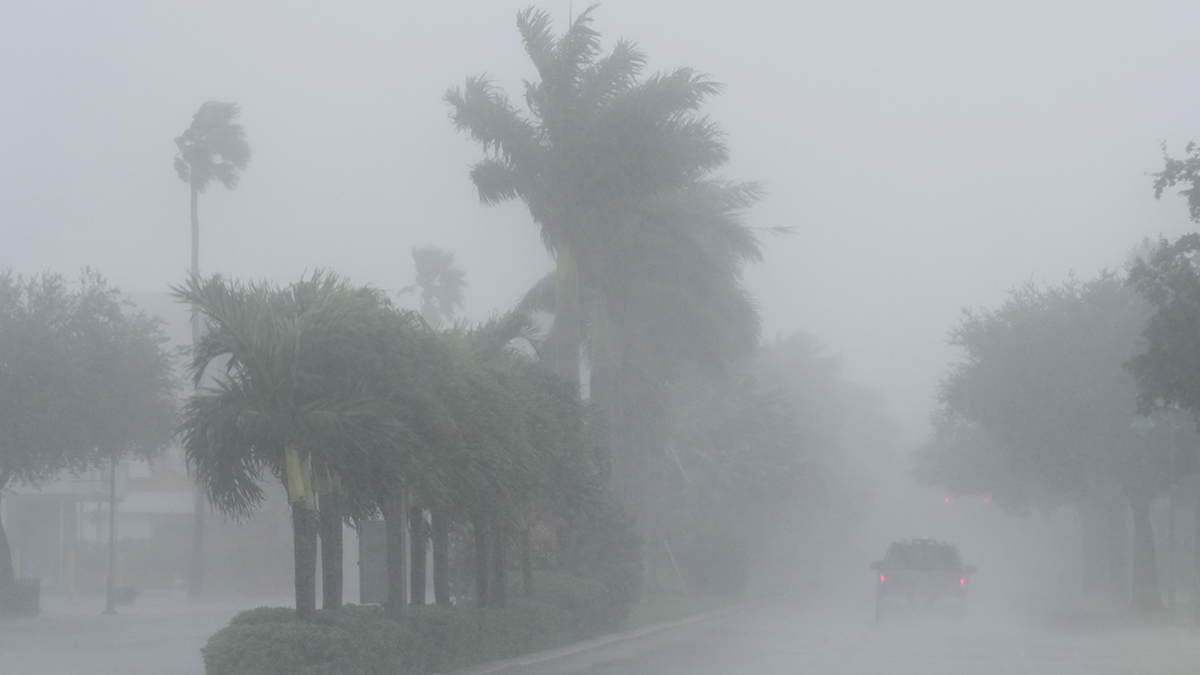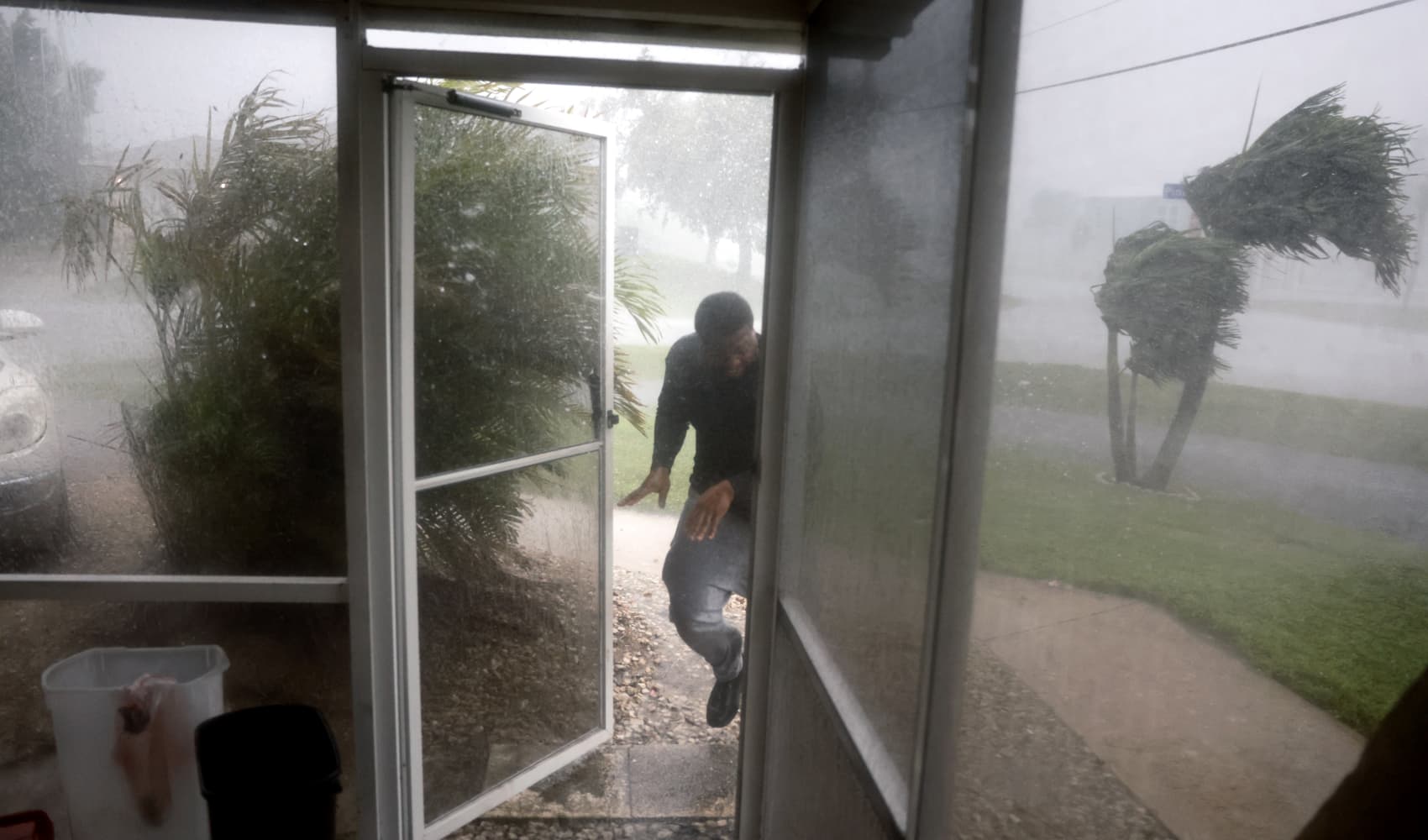Hurricane Milton made landfall along Florida's Gulf Coast on Wednesday night. Earlier in the day, as tropical storm-force winds began lashing the state, officials said that time was running out for people to evacuate — and the odds of survival were bleak for holdouts determined to stay.
Milton has fluctuated in intensity as it approached Florida and became a Category 3 hurricane Wednesday afternoon. Millions have been ordered to evacuate and bridges were closing as the storm was expected to bring massive storm surges, damaging winds and flooding rains.
By the time it made landfall on Wednesday night, Milton was downgraded to a Category 2 storm. As of Wednesday night, more than 1.5 million people were without power in Florida.
The storm is threatening the Tampa Bay area, a major population center that is home to more than 3.3 million people and has managed to evade a direct hit from a major hurricane for over 100 years. Milton, which had already brought rain, winds and tornadoes on Wednesday, is menacing communities already battered by deadly Hurricane Helene, which came ashore just two weeks ago.
National Hurricane Center forecasters warned Milton, which has grown in size, is “expected to remain an extremely dangerous major hurricane” when it reached Florida's coast.
What time will Hurricane Milton hit Florida?
Hurricane Milton made landfall on Florida's Gulf Coast near Siesta Key on Wednesday night, the National Hurricane Center said.
“We are bracing and prepared to receive a major hit,” Gov. Ron DeSantis said at a Wednesday briefing.
As of Wednesday night, the storm was about 100 miles (155 kilometers) southwest of Tampa with sustained winds of 125 mph (205 kph).
The storm is expected to retain hurricane strength as it crosses central Florida on Thursday toward the Atlantic Ocean.
Get a weekly recap of the latest San Francisco Bay Area housing news. Sign up for NBC Bay Area’s Housing Deconstructed newsletter.
President Joe Biden, who postponed an overseas trip so he could remain at the White House to monitor Milton, warned it “could be one of the worst storms in 100 years to hit Florida."
Tropical storm-force winds lashing Florida
Tropical storm-force winds have begun lashing the western coast of Florida as Hurricane Milton draws closer, the National Hurricane Center said in an advisory Wednesday afternoon.
Officials said at 3 p.m. that the Category 4 storm’s center was 120 miles (193 kilometers) southwest of Tampa and 110 miles (177 kilometers) west of Fort Myers. It had maximum sustained winds of 130 mph (209 kph).
Seven tornadoes confirmed in Florida as winds arrive
Seven tornadoes have hit Florida in advance of Hurricane Milton, the National Weather Service in Miami said Wednesday.
Hurricanes and tropical storms have the ability to produce tornadoes. The National Weather Service said there had been 53 tornado warning issued by 3 p.m. on Wednesday, 41 of which were issued by the weather service in Miami.
The weather service said via X that it had “received reports of structures damaged in Lakeport” Wednesday as the “most recent tornado-warned storm moved through the area.” The service said it was the second tornado to impact Lakeport, an unincorporated community about two hours from Miami, on Wednesday.
Power outages across the state
Power outages were climbing as Milton made landfall, with more than 1.5 million customers in Florida were without power on Wednesday night. That’s according to PowerOutage.us, which tracks outages nationwide.
How bad is damage expected to be?
Florida's Gulf Coast is especially vulnerable to storm surge.
Helene came ashore about 150 miles (240 kilometers) north of Tampa in the Florida Panhandle and still managed to cause drowning deaths in the Tampa area due to surges that were about 5 to 8 feet (1.5 to 2.5 meters) above normal tide levels.
With Milton, forecasters warn of a possible 10- to 15-foot (3- to 4.5-meter) storm surge in Tampa Bay. It is the highest surge ever predicted for that location and has led to evacuation orders for communities all along the coast.
The county that’s home to Tampa ordered areas adjacent to the bay and all mobile and manufactured homes to be evacuated by Tuesday night. With a predicted storm surge that could swallow a single-story house, Tampa Mayor Jane Castor issued increasingly dire warnings Tuesday to those planning to ride out the storm: “So if you’re in it, basically that’s the coffin that you’re in."
Milton is forecast to cross central Florida and dump as much as 18 inches (46 centimeters) of rain while heading toward the Atlantic Ocean, according to the hurricane center.
Why are scientists saying this is a weird storm season?
Milton is just the latest system in a storm season that scientists say is the weirdest they’ve ever seen.
Forecasters were predicting a busy Atlantic hurricane season before it started, and it began when Beryl became the earliest storm on record to reach Category 5 status. But from Aug. 20 — the traditional start of peak hurricane season — to Sept. 23 it was record quiet, said Colorado State University hurricane researcher Phil Klotzbach.
Then, five hurricanes popped up between Sept. 26 and Oct. 6, more than double the old record of two. On Sunday and Monday, there were three hurricanes in October at the same time, which had never happened before, Klotzbach said. In just 46.5 hours, Hurricane Milton went from forming as a tropical storm with 40 mph winds to a top-of-the-charts Category 5 hurricane.
With hurricanes disrupting the lives of millions in the U.S., some might wonder if it's possible to control extreme weather events. But scientists say hurricanes are far too powerful for that, and climate change is providing more fuel than ever for storms like Helene and Milton.
What causes a hurricane?
Hurricanes often start as tropical waves that combine with warm ocean waters, according to the National Oceanic and Atmospheric Administration. They may also be fueled by thunderstorms. The weather system moves west as warm ocean air rises into it, and that creates a low pressure area underneath it, NOAA said. Air rises and cools, and that forms clouds and thunderstorms.
Hurricanes have maximum sustained winds — the highest one-minute average wind speed at a particular point in time — of 74 mph (120 kph) or higher. If a tropical cyclone has maximum sustained winds between 39 and 73 mph (63 kph to 120 kph), it is called a tropical storm. If maximum sustained winds are less than 39 mph, it is called a tropical depression.
Hurricanes typically occur during hurricane season, which in the Atlantic basin occurs each year from June 1 to Nov. 30.
What are the different hurricane categories?
The Saffir-Simpson Hurricane Wind Scale rates hurricanes from one to five. Category 1 hurricanes range from 74 to 95 mph and can bring very dangerous winds that can damage even sturdy houses. Category 1 is the weakest hurricane, and the storms strengthen up the scale from there.
If a hurricane is Category 3 or higher, it is considered a major hurricane. Category 3 hurricanes start with maximum sustained winds of 111 mph (180 kph).
How serious is a Category 5 hurricane?
Catastrophic. A Category 5 hurricane destroys houses, cuts power to vast areas and isolates communities due to downed trees and fallen utility poles. It can also cause critical damage to infrastructure like roads, bridges and dams. A Category 5 hurricane has the ability to render large areas uninhabitable for weeks or longer.
What is storm surge?
Storm surge is the level at which sea water rises above its normal level.
Much like the way a storm’s sustained winds do not include the potential for even stronger gusts, storm surge doesn’t include the wave height above the mean water level of the surge itself.
Surge is also the amount above what the normal tide is at the time, so a 15-foot (5-meter) storm surge at high tide with 10-foot (3-meter) waves on top of that can level buildings with ease, knock down bridges and flatten anything in its path.
What kind of destruction do hurricanes cause?
The toll of damage from a hurricane depends on its strength and where it makes landfall. Even a relatively weak hurricane can cause major damage and many deaths if it hits a vulnerable community or damages a key piece of infrastructure. A mid-strength hurricane such as 2004's Hurricane Jeanne in Florida will cause devastating damage to homes, infrastructure and the power grid. Deaths also commonly occur because of flooding, accidents, injuries and other disturbances caused by the storm.
What was the deadliest hurricane in the US?
The 1900 Galveston hurricane in Texas is the deadliest natural disaster in U.S. history, according to NOAA and other authorities. The storm killed at least 8,000 people, destroyed thousands of buildings and left hundreds of millions of dollars in damage by today's standards. Other extraordinarily deadly hurricanes in recent history have included Hurricane Maria, which killed more than 3,000 people in 2017, and Hurricane Katrina, which killed more than 1,300 in 2005.



